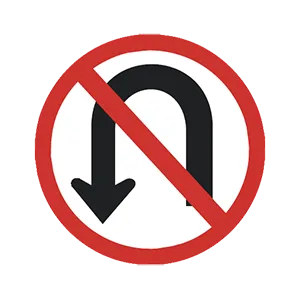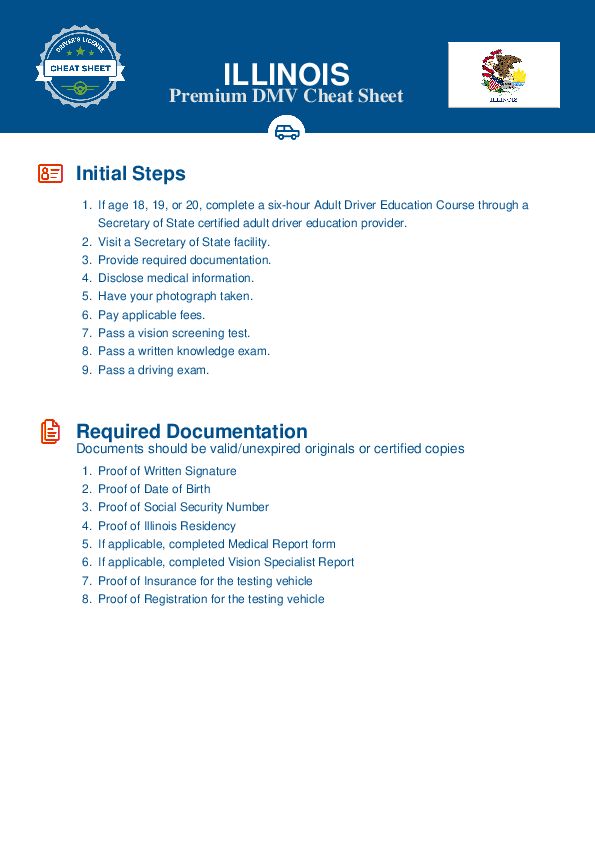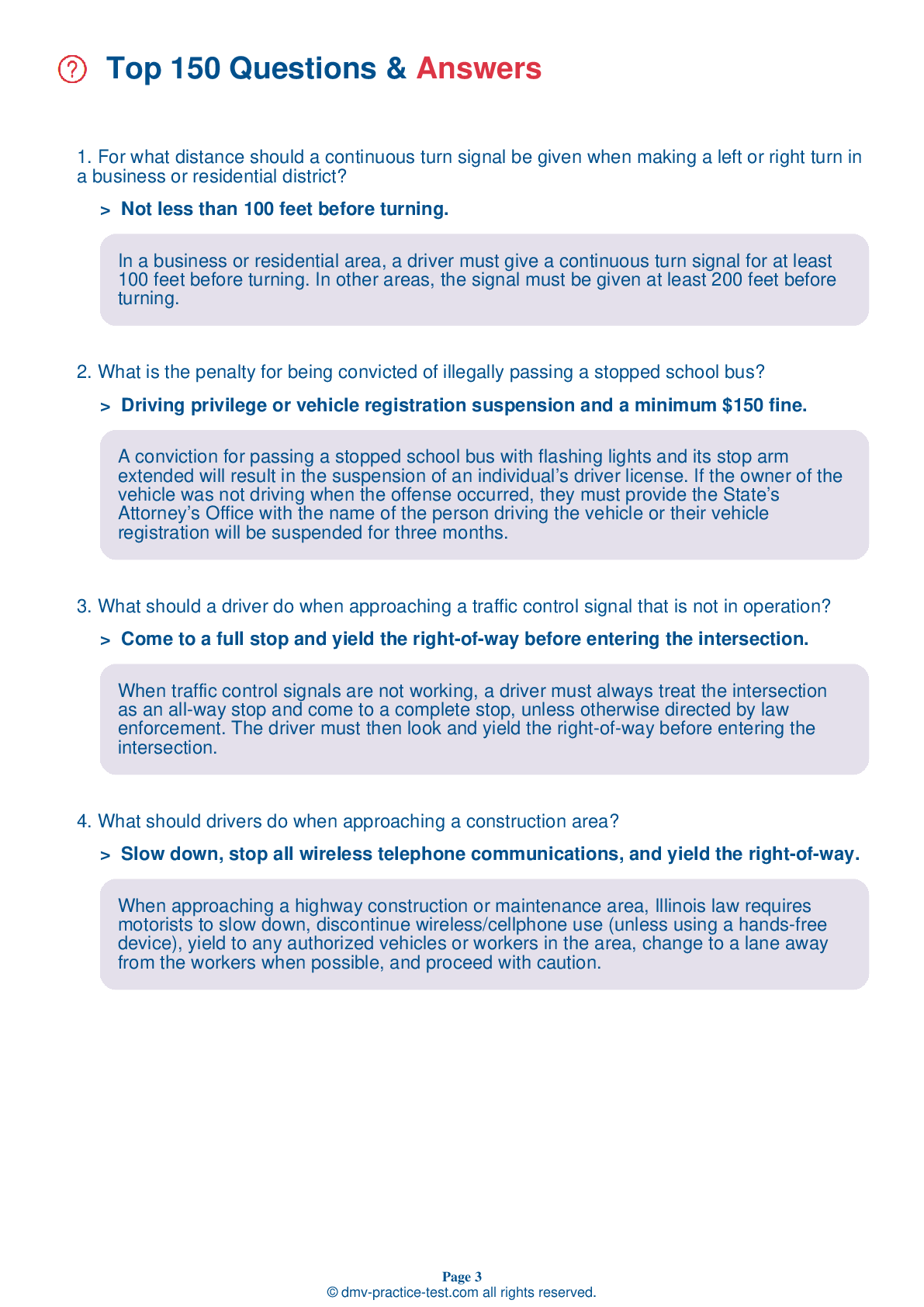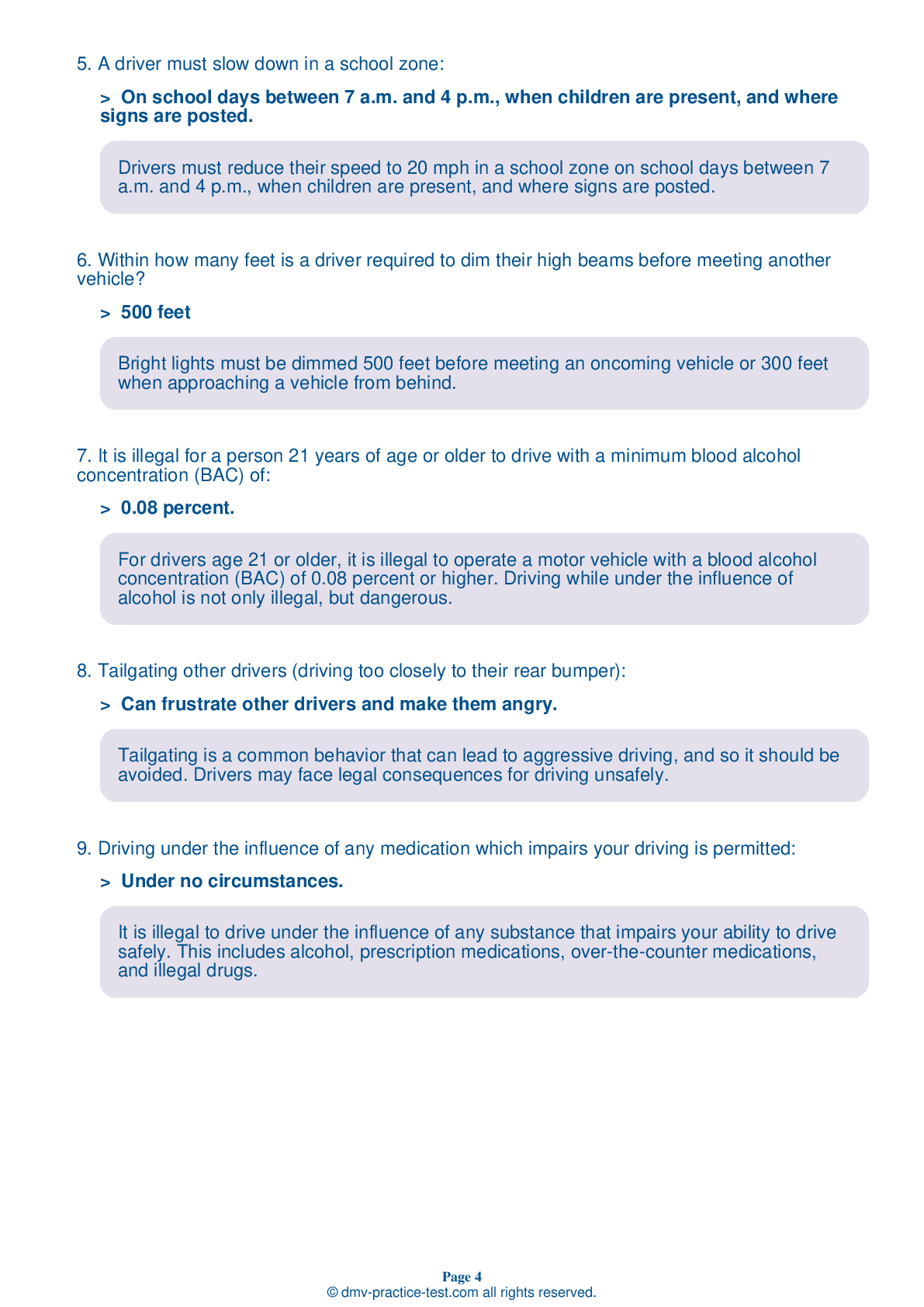FREE Illinois DMV Practice Test #14 Page 3 of 3
For January 2025, this set of Illinois DMV practise tests has been updated. It includes questions based on the most important traffic signs and rules for 2025 from the Illinois Driver Handbook. To study for the DMV driving permit test and driver's licence exam, use actual questions that are very similar (often identical!) to the DMV driving permit test and driver's licence exam.
Each question on the practise exam has a tip and explanation to help you recall the ideas. Questions about traffic rules, traffic signs, and driving statutes, as well as information from the Driver Handbook, will be included in the written portion of the official DMV test.
You must properly answer 38 of the 35 questions to receive a passing mark. To help you prepare for your Illinois instruction permit or driver's licence, take our DMV practise test.
The DMV exam is offered in a variety of languages.
Using any form of testing help will result in an automatic fail, and the DMV may take further action against your driver's licence, so avoid it.
25 . If you are driving and the rear end of your car starts skidding to the left, you should:
If your vehicle enters a skid, you should take your foot off of the brake and steer in the direction that you want to go. For example, if the rear of your vehicle is skidding to the left, you should steer to the left. This will help bring the front of the vehicle in line with the rear, thereby straightening out the vehicle's overall direction.
26 . You should not start across an intersection if you know you will block the intersection when the light turns red:
Even if the signal is green, you must not enter an intersection unless you can get completely across before the light turns red. If you block the intersection, you can be cited.
27 . This sign means:

This sign informs drivers that they are leaving a divided roadway and approaching a two-way highway.
28 . You are approaching a green traffic light and traffic is blocking the intersection. What is the best thing to do?
Even if your light is green, you must not enter an intersection unless you can get completely through the intersection before the light turns red. If you block the intersection, you can be cited.
29 . This road sign means:

Warning signs are usually yellow with black markings. This sign warns drivers that the upcoming road will curve right, followed by a curve to the left. Drivers should adjust their speed to safely continue on the road.
30 . What does this road sign mean?
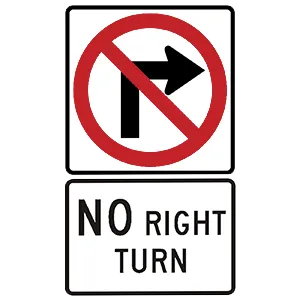
This sign prohibits right turns. It is illegal to turn right at an intersection where this sign is posted.
31 . Make room for cars that are entering the freeway by:
Make room for vehicles that are entering a freeway. If possible, merge into the next lane to create a gap for the incoming vehicles. If you cannot merge, adjust your speed to allow for the vehicles to enter traffic as smoothly and safely as possible.
32 . This yellow warning sign means:

This sign is placed on roads near schools to warn drivers to slow down, drive with caution, and watch for children.
33 . Having a driver license is a:
Holding a driver license is not a right. It is a privilege that must be earned and maintained.
34 . This road sign means:
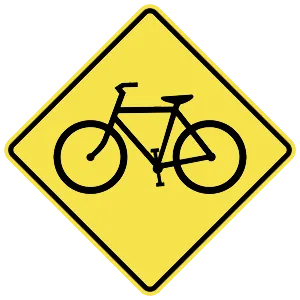
Warning signs are usually yellow with black markings. These signs alert drivers to areas where bicycles may be crossing.
Need Car Insurance? No problem!
Compare the best rates in Illinois and find a personalized policy that meets your needs.
1. Are You Currently insured ?
2. Married ?
3. Do you own your Home?
4. Do you have more than 1 car ?
5. Have you or a Family Member Honorably Served in U.S. Military ?
6. Your Name
7. Age
8. Zip code
IMPORTANT REMINDER:Auto Insurance is Mandatory to drive in Illinois. Get covered before you hit the road to avoid any fines.
Ranked by best match
